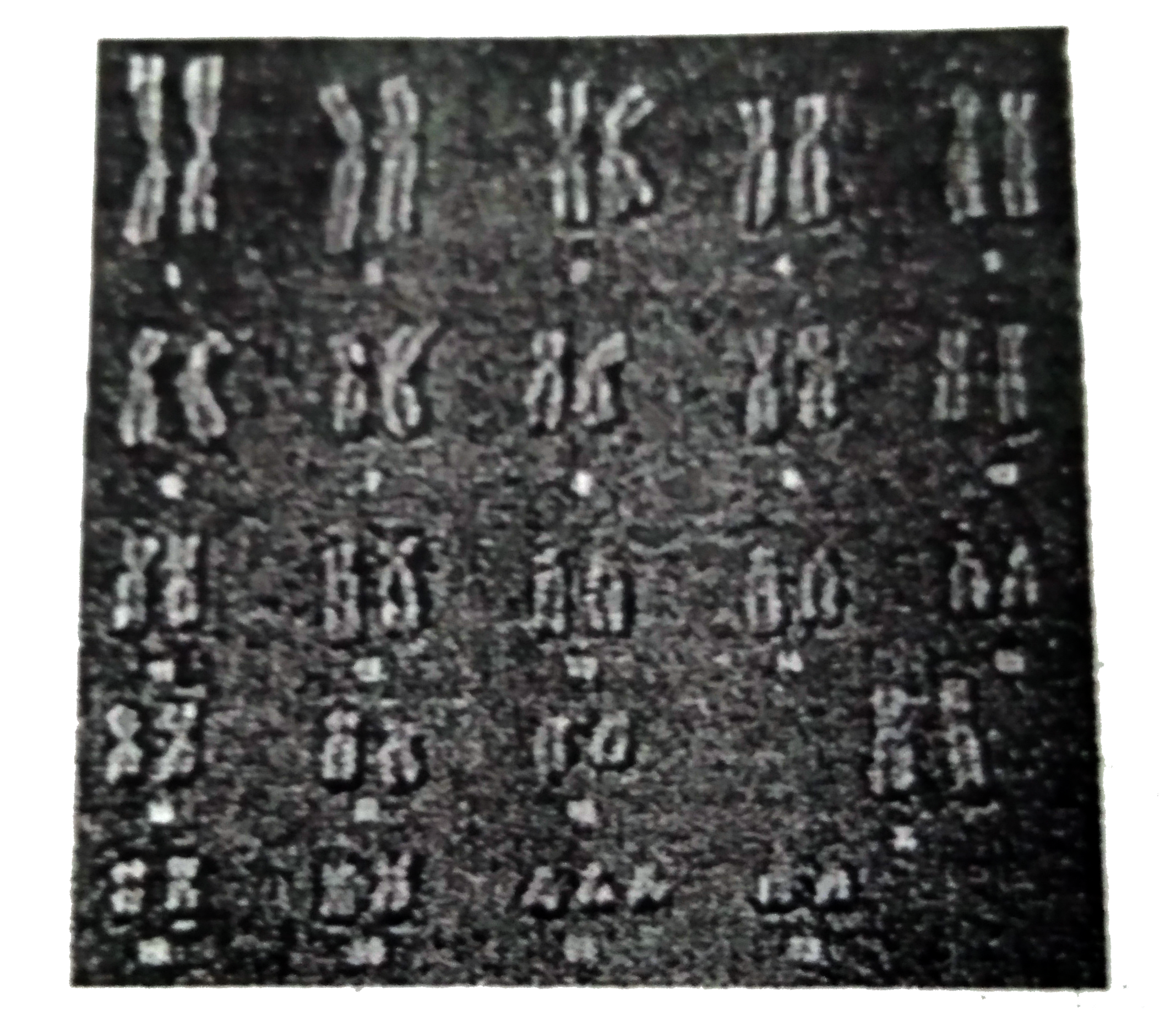Karyotype is
Division of nucleus
Chromosome complement specific for each species
All organisms possessing some type of chromosomes
None of the above
The correct Answer is:B
Step-by-Step Text Solution:
1. Understanding Karyotype:
- A karyotype refers to the complete set of chromosomes in an individual organism. It is a way to visualize and categorize the chromosomes based on their number, size, and shape.
2. Definition of Karyotype:
- Karyotype can be defined as the chromosomal characteristic of a cell, which includes the number and appearance of chromosomes.
3. Analyzing the Options:
- Option A: Division of nucleus - This is incorrect. The process of nuclear division is known as karyokinesis.
- Option B: Chromosome complement specific for each species - This is correct. Each species has a specific number of chromosomes that make up its karyotype. For example, humans have 46 chromosomes.
- Option C: All organisms possessing some type of chromosomes - This is misleading because while all organisms have chromosomes, they do not all possess the same type or number of chromosomes.
- Option D: None of the above - This is incorrect since option B is a valid definition.
4. Conclusion:
- The correct answer is Option B: Chromosome complement specific for each species.
- A karyotype refers to the complete set of chromosomes in an individual organism. It is a way to visualize and categorize the chromosomes based on their number, size, and shape.
- Karyotype can be defined as the chromosomal characteristic of a cell, which includes the number and appearance of chromosomes.
- Option A: Division of nucleus - This is incorrect. The process of nuclear division is known as karyokinesis.
- Option B: Chromosome complement specific for each species - This is correct. Each species has a specific number of chromosomes that make up its karyotype. For example, humans have 46 chromosomes.
- Option C: All organisms possessing some type of chromosomes - This is misleading because while all organisms have chromosomes, they do not all possess the same type or number of chromosomes.
- Option D: None of the above - This is incorrect since option B is a valid definition.
- The correct answer is Option B: Chromosome complement specific for each species.
Topper's Solved these Questions
- STRUCTURE OF THE CELLBOOK - DINESH PUBLICATION ENGLISHCHAPTER - STRUCTURE OF THE CELLEXERCISE - Check your Grasp
17 Videos
- STRUCTURAL ORGANISATION IN ANIMALS BOOK - DINESH PUBLICATION ENGLISHCHAPTER - STRUCTURAL ORGANISATION IN ANIMALS EXERCISE - Check your grasp
10 Videos
- THE CELL : THE BASIC UNIT OF LIFE BOOK - DINESH PUBLICATION ENGLISHCHAPTER - THE CELL : THE BASIC UNIT OF LIFE EXERCISE - CHECK YOUR GRASP
12 Videos
Similar Questions
Knowledge Check
Klinefelter's syndrome is characterised by a karyotype of ..........
AXOBXXYCXYYDXXXKlinefelter's syndrome is characterised by a karyotype of
AXYYBXOCXXXDXXY
Assertion (A) According to "genic balalnce therory" the karyotype with AA-XO in Drosophila is sterile female .
Reason (R ) Y- chromosome in Drosophila lacks male determining factor
View SolutionDifferentiate between Symmetric and Asymmetric karyotypes.
View SolutionWhat is Karyotyping?
View SolutionXXY karyotype leads to______
View SolutionA horse has karyotype of 64 chromosomes and a donkey has karyotype of 62 chromosomes. their offspring mule is sterile because it can not successfully
View SolutionDiagrammatic representation of karyotype of a species is called
View Solution

